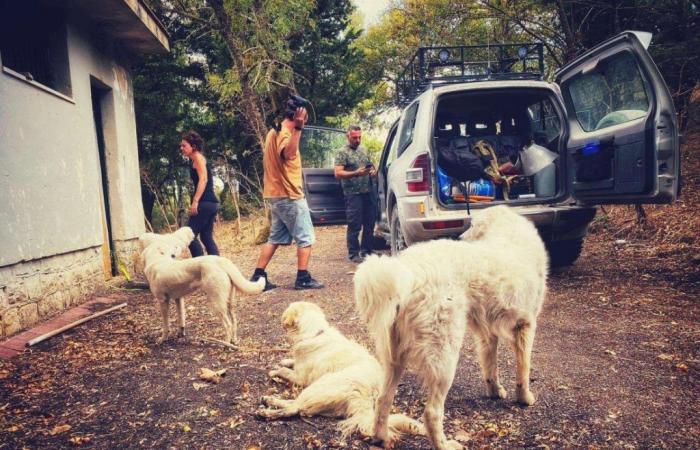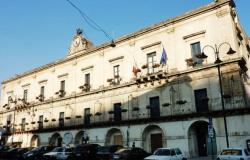L’AQUILA – Two years of work in Pescasseroli, in Abruzzo, to survey and monitor the presence of wandering dogs in the municipal area and evaluate the characteristics of their cohabitation with humans. The project of the Stray Dogs International association, sponsored by PNational arch of Abruzzo, Lazio and Molise, is almost coming to an end. An experience that also helps to approach the topic of stray animals in a different way.
A new approach to the world of free dogs
A work that delves deep into our relationship with dogs. At a theoretical level, in recent decades, it has mainly been the studies of the biologist and cognitive science expert Raymond Coppinger to shine a spotlight on the lives of free dogs. A condition, that of the free dog, which our society mistakenly tends to dismiss as an anomaly. Nothing could be further from reality.
“Today again – explains Lorenzo Niccolini, president of Stray Dogs – 80% of the world’s dogs live in free-range conditions. They are not wild animals, a stray in any case has been selected and has co-evolved with man over the millennia. But that of a free dog, not subject to someone’s ownership, is a much more normal condition than the one we usually conceive today.”
Even the history of humanity tells something else. Aristophanes and Pliny the Elder, Shakspeare rather than Jack London already spoke about free dogs at the beginning of the 20th century.
A much more ‘natural’ condition, but which we seem to have completely removed from our horizon of thought: “In most countries of the world the dog is considered a free animal. Furthermore, it is an animal that is absolutely skilled in colonizing environments, super-adaptable, opportunistic, capable of exploiting our resources”.
The limits of traditional approaches
The resources they are a key point of Stray Dog’s approach, a problem that we have already talked about in other contexts, such as in the management of hybridization with wolves on the Gran Sasso. For Clara Caspanivice president of Stray Dogs, is a crucial point: “Before talking about animals or coexistence, we need to talk about resources. In our projects in the area the first thing we take stock of are those, if they are there that’s where we go. If you work on the dog but not on the resources, in a year you’ll be back to business.”.
It is an aspect almost totally ignored by stray dog management policies whose common trait is always to remove as many dogs as possible from the territory. Stray animals, despite the river of money they generate, remain a massive phenomenon. Adoptions, kennels that fill up, relay races, dogs placed in the wrong contexts, and now Northern Italy is also grappling with the consequences of policies on stray dogs that are more attentive to the quantity of dogs collected than to the quality of the projects implemented .
“Removing only dogs from the territory – continues Clara – fuels the presence of other dogs in the territory if the resource issue is not addressed”.
The StrayDogs experience
Stray Dogs was born almost ten years ago. Clara and Lorenzo met years ago during a seminar on the evaluation of family and kennel dogs. “I often traveled to countries where there were a lot of strays. As an educator I immersed myself in this world and one day with Lorenzo we went to Morocco where there is an incredible situation of dogs and strays”. That’s where Stray Dogs was born: “After returning from that trip we decided to start the project, it was the part of dog breeding that interested us. Observe rather than evaluate, observe not only dogs, but the environment, the human context, talk to people.” In 2018 the association was also structured with the arrival of other volunteers, technicians, veterinarians, researchers and disseminators.
Their approach is clear. “The issue of stray animals is not just dogs” explains Clara. “There is a complexity of things to know and understand.”
At the moment Stray Dogs’ main activity, and also open to people, are the camps they organize in Morocco and Abruzzo but not only. In the Stray camps we study the territory, listen to and observe the dogs and their interactions with the environment: “We carry out studies in the area with the collaboration of people who also come to have an experience for themselves. We collect data, we carry out our project and we try to develop these issues more and more and make people experience them.”
There is an awareness that changing your mind about stray animals is not easy: “It is increasingly difficult for people to think about freedom for themselves, let alone for dogs” Clara reflects again. “Today there is a great fear of everything, even just leaving the house. There is a fear of facing a world which, in the image we have built for ourselves as a society, does not allow us to live in a situation where risks exist. What we can bring with our project is above all a cultural change.”
The free dog
But who is this free dog that is so scary? The stray The real dog is the free dog that does not have a human referent but normally occupies an environment close to humans. The semi wild he is always a free dog but tends to distance himself from man, explains Clara: “He tends to move away from urban areas, preferring rural areas or even just a landfill, more secluded places”.
Finally there are the wandering owners, “which we see more and more often”. They are not defined as free, they are free to move but normally for food they have a human reference and therefore a home. These are important, because they often mix with strays but clearly have different behaviors compared to strays.
The free dogs of Pescasseroli
In Pescasseroli, the Stray Dogs study, which is now in the data reprocessing phase, has shown that almost all free dogs are wandering owners, but perfectly integrated into the territory.
“They are dogs that have a handler and are free because they are working dogs, guarding livestock and protecting their property and are left to roam” says Lorenzo. Sometimes they accompany the livestock, sometimes they wander, sometimes they are practically neighborhood dogs, like those in the square in Pescasseroli. It is also thanks to them that few wild animals are seen in Pescasseroli, or in any case less than in other areas, as well as along the perimeter of the large number of breeding farms that surround the town: “It’s a perfectly integrated type of dog, and even at night they do an important job.”
They cause little nuisance to the fauna and as they are dogs selected to ward off the wolf, hybridization between the two species is almost impossible which, however, is common with other dogs, Nordic and huskies in particular which are also those with greater predatory instincts towards wild animals. .
From Pescasseroli’s study, however, other interesting ideas also emerged. Free dogs, for example, tend to be much calmer than owner dogs.
“Free dogs have great communication and social skills and also know how to avoid conflicts” according to Lorenzo. The data generally confirms this dynamic. “They are not aggressive dogs, they do not want to be injured or taken away and they would not last long if their behaviors were poorly suited to the context they live in. Free dogs are educated and raised by dogs. They are dogs though they create great social alarm because people are afraid of them.” Underestimating the capabilities of dogs is one of the biases of our relationship with the environment: “Just think of barking or growling, which are actually deterrents and not a manifestation of aggression, something often misunderstood by humans.”
Errors that, on the contrary, dogs don’t make, underlines Clara. “Dogs study us, especially those that live in close contact with humans. They have a high capacity for observation towards us, they study how we live, how we move and adapt based on that.”
If, for example, the concept of a pack is scary, dogs organize themselves accordingly with a strategy that is very different from that of wolves: “In Morocco we have observed that the stray dogs living in the village tend to be organized in three, maximum four specimens. In more rural areas, however, groups tend to increase in number.”
Interactions with owned dogs were also observed in Pescasseroli: “In more frequented areas and paths, guardian dogs are more accustomed to passing by, perhaps they bark from afar and even if there are interactions, nothing happens. Those who live in more isolated areas, however, may be more reactive.”
It’s certainly not about going around trekking with a map of the pastures but if you go to the mountains you need to know how to behave and what distances to keep: “For anyone who has a dog it is essential to know these things” explains Clara. “What we suggest to shepherds is to ensure that these dogs do not live too isolated. The institutions, for their part, should help with signs that help raise awareness of how to behave.”
In Pescasseroli the community, citizens but also breeders and companies, experienced the presence of Stray Dogs well. “We have a non-judgmental approach” says Lorenzo. “We certainly have our ideas, but we like to collect information, listen to people, understand why certain choices are made that perhaps we like less but which we wouldn’t even have known if we had arrived as colonizers”. And the feedback was positive: “We have always had great openness from local companies, they are very open to dialogue and very participatory, they have given us the opportunity to immerse ourselves in their context with curiosity and humility. After all, you can’t just experience the good or bad side of something without looking into it further.”
From the first results of a questionnaire administered in Pescasseroli, the presence of free dogs does not seem to be a very serious problem. “There are clearly situations where we need to intervene” concludes Clara, “because the dog is sick or has not integrated into the territory but we have also shown that other approaches can be worked on”.
Projects of this type are being tested in various areas of the world, and the programs are proving of particular interest sterilization-vaccination-re-entry on the territory: “The important thing is to put everything into the specific reality, studying the complex systems linked to cohabitation is the only way that allows you to really work on a problem”.







